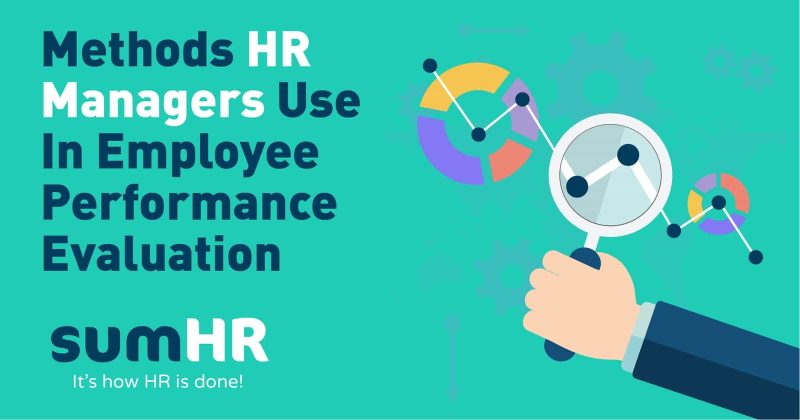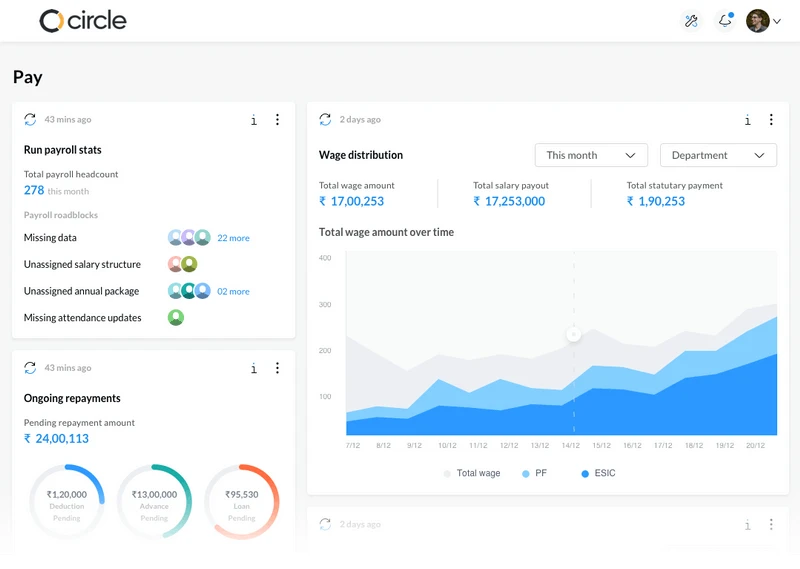An employee performance review is a valuable tool for the success of a business and its workforce.
The human resources team becomes a critical player in performance management to build the skills of people involved in the organization. This eventually helps workers meet expectations and reach goals set by the organization.
The employee performance reviews deployed by the HR team help enhance the process of recruitment. In addition, it gives supervisors the ability to in a way that has a measurable impact on the company’s performance.
Let us now look deeper into the performance management process
Regular Employee Performance Evaluation is Necessary
Any organization needs a plan of action to reach its goals. The best way to meet these expectations is through the assessment of the strengths and weaknesses of teams and individuals alike.
So, employees must know the level at which they are performing based on the assessment of their supervisors and peers. This enables them to understand the overall contributions of their job role to the company.
Through regular evaluation and feedback, workers in your organization have the chance to stay on board with the plans that you make, while taking the initiative to perform better.
From the evaluator’s perspective, such work performance evaluations help in making HR decisions.
Advantages of Employee Performance Reviews
HR managers might believe that the performance evaluation process is a waste of time. However, it can have many advantages for workers and employers alike. Here are the benefits of this process.
- The HR team can understand the areas that require training and development. They can address concerns and factors that are hindering progress in the workplace.
- Individuals can track their organizational goals and devise workable action plans to reach their best work potential.
- Workers can strengthen their skills, work on the weaknesses and advance their careers by gaining knowledge of their competencies.
- Teams, be it remote or in-person, can have discussions and meetings in order to improve productivity and offer insights on goals that need attention
- Peer reviews can help in improving communication skills, have frequent conversations, and develop a stronger company culture.
Now that we know the benefits of the performance review process, let us understand the methods of undertaking it.
Also Read What is Performace Appraisal & performance appraisal Methods
1. Classic Rating System
Most companies conduct performance appraisals. It is a formalized, structured, and planned system which allows people in leadership roles to measure job performance in a concrete manner.
The employee’s productivity should match the KPIs or Key Performance Indicators for a particular role, and the overall organizational objectives.
Performance appraisals include ratings, which help employees know their exact work standards.
The classic approach follows methods, standardized forms, and procedures for evaluation. Usually, the direct manager of employees conducts the evaluation process. However, a member of the HR department could be present too.
2. 360-Degree Feedback
A more detailed employee performance evaluation approach is 360-degree feedback.
This form of appraisal takes feedback from all those the employee would be in contact with daily for work-related activities. It includes colleagues, subordinates, project-partners, senior managers, and more.
This process gives an all-round insight into employees, especially if there are big teams and quality programs running in the company. The HR teams, in conjunction with the immediate supervisor of the employee, usually run this exercise.
360-degree feedback can be divided into 5 broad steps.
- Managerial reviews – This traditional method of appraisal comes from supervisors and managers who oversee employees. Managers can accurately rate employee skills and employee development as an individual and in a team.
- Self-evaluation – In a self-evaluation, employees have the opportunity to understand their own accomplishments and shortcomings. It is best to place evaluation forms for self-appraisals as it will ensure that the process has a structure.
- Peer reviews – A peer review is a really important form of an appraisal. This process ensures the development of interpersonal skills and promotes teamwork.
- Customer Reviews – Most often, customers are the people who can judge the quality of your service the best. They can give you inputs on your actions and help you answer their demands better in the future. Their feedback can provide you with a different perspective.
- Reviews from subordinates – Although this is not common in many businesses, receiving reviews from the people you oversee can be very enlightening. They can comment on your leadership skills, keep a check on your strategies and help you grow with negative feedback.
3. Management by Objectives
In this method, employees are appraised based on their goal accomplishment. After this, the manager comes up with a plan for employees to improve their performance in the future cycle.
The supervisor can review several factors ranging from adherence to policies, meeting deadlines, the number of sales deals closed and more.
One way to go about this process is through objective and key results (OKRs) This method of appraisal follows a hierarchy of goals. It begins from individual goals to overarching corporate objectives.
Through this method, a business can overcome the challenges of employee disengagement while employees can gain an understanding of how their actions contribute to a larger picture.
For more information on OKRs, check out this blog.
4. Behaviourally Anchored Rating Scale
It is a fact that certain tasks need specific behavioural traits to be successful. For example, a sales manager must be confident and optimistic, while a customer service employee must be empathetic and kind.
The behaviourally anchored rating scale measures exactly this factor. The scale is unique to each job role and it rates the performance of an employee in areas that can be hard to quantify.
Although such a method is very time-consuming to execute, it can certainly improve employee behaviour and give them more clarity on where they need improvement.
5. Employee satisfaction and employee engagement survey
As the title reads, this survey is slightly different. It is employee-centric and assesses the satisfaction and level of engagement shown by employees towards their superiors and the company as a whole.
Employee engagement is key to companies reaching their business goals. 85 per cent of workers are unhappy in their workplace, which makes this a very important theme to focus on.
A survey with specific questions can be sent out to the workers, to analyse their satisfaction in the company. They can either rate certain statements on a scale or answer questions. Some sample questions are:
- How purposeful do you find your work?
- How often do you feel stressed or overworked?
- How satisfied are you with the benefits offered by the company?
Such surveys can help the HR department and people in leadership roles in the company work on their negatives and help in building a more loyal, satisfied and engaged workforce.
Involvement of HR in Performance Evaluation
HR arguably place a central role in performance evaluation. They are in charge of overseeing employee affairs from onboarding to exit. It is vital for the HR department to follow a few tips and methods to ensure that the appraisal process goes smoothly.

- Set doable standards
Ensure that your employee is not reaching out for something that is out of their limit. This can easily bring down their morale. So, set specific, achievable objectives that challenge employees and allow them to feel accomplished after finishing them.
- Help employees grow
Give employees clear areas that they need to focus on. This can be a skill or a plan that they need to follow. Align them to a path where they can learn and develop themselves.
- Track consistently
Observe and take note of employee behaviour regularly. Smart HR software can help you keep a record of their performance and productivity throughout the year.
Check out sumHR’s performance management software for more information.
- Organise your feedback
Divide your meeting into clear parts. Mention the positives, negatives and areas for improvement separately. This will remove any chance of miscommunication.
- Be honest
You might have a difficult time while criticizing your employee, but it is necessary. Praise them where it is warranted and also point out the flaws in their work with honesty.
- Communicate
Make your performance review a conversation, not a monologue. Take questions from your employees and clear any issues with them.
- Do not make judgements
Making judgements and controversial statements can take an ugly turn if you offend the employee. So, do not judge their personality or make comments about sensitive issues.
Be empathetic, kind and honest. Consider their workload, familial stresses and their situation before you frame your feedback.
This will help you reach out to the employee in a non-confrontational manner and the entire process will be constructive and friendly.
- Give constant feedback
Do not limit your appraisals to a single bi-annual or annual meeting. If an employee shows exceptional performance, compliment them instantly. If you see any areas of improvement, make sure to let them know, so that they can work on them.
IIn Conclusion:
Employee performance evaluation is a crucial time for any workforce. There are several methods to make this process fruitful, including the above-mentioned strategies.
The Human Resources team plays a huge part in making this process beneficial for employers and employees alike. Their actions can help each and every employee become the best version of themselves in the organization.
Performance evaluation can always be made easier, with the help of HR software. It can ease the paperwork involved and help streamline your feedback.
sumHR can help ease this HR function. Our features include:
- 360-degree feedback
- OKRs with KRAs and KPIs
- Team-centric review cycles
- Flexible forms
- Rating scales
- Goal tracking
And more!
Check out our performance review software here or book a free demo with us!
If you have any questions leave it down in the comment section below and I will be sure to answer it








